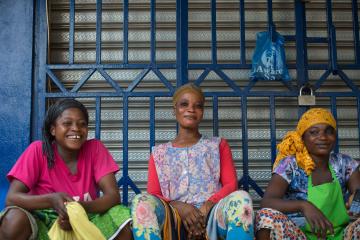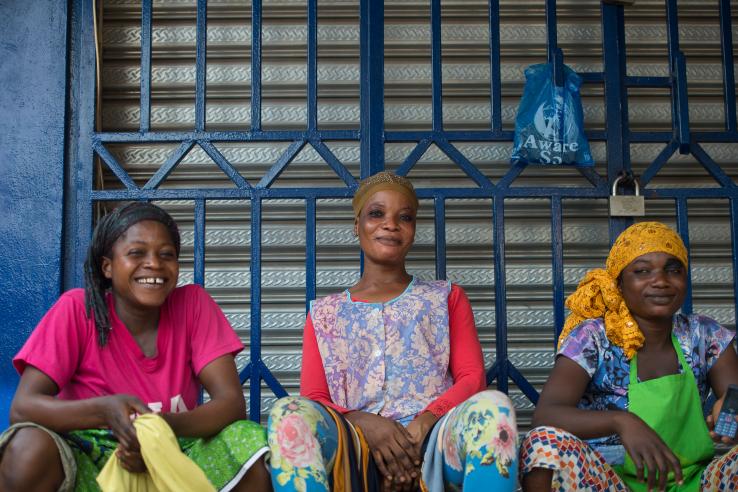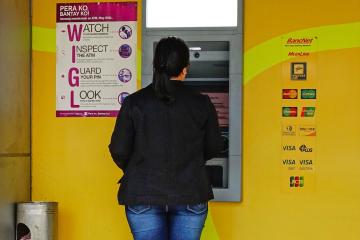
Leveraging behavioral insights to increase savings in low- and middle-income countries

This week, J-PAL published a new Policy Bulletin on the most effective approaches for helping individuals and families in low- and middle-income countries (LMICs) build up their savings. The Bulletin reviews twelve randomized evaluations and finds that commitment savings products–voluntary arrangements that people establish to increase the likelihood that they will save more–play an important role in helping individuals living in poverty overcome barriers that prevent them from reaching their savings goals.
Effectively managing finances is difficult for low- and high-income households alike, but households experiencing poverty often face more acute challenges. When it comes to saving, the primary issue for many low-income households is the obvious: having low income leaves little to save. As a result, households have fewer resources to cope with unexpected costly events, such as illness or a poor harvest, or to make investments with long-term goals.
Despite these challenges, evidence suggests that people living in poverty have substantial demand for savings and often save through informal means such as hiding cash under mattresses, forming savings groups, or building houses one room at a time.
Why is it that many people do not achieve their savings goals?
While many financial service providers in LMICs offer savings products, formal savings rates remain low: only 21 percent of adults in low-income countries saved at a formal financial institution in 2017.
In some contexts, formal savings rates are low due to the costs involved in opening and maintaining accounts. However, reducing the costs associated with savings accounts does not consistently lead to increased savings balances, suggesting that other barriers may constrain savings behavior.
Although increasing access and lowering costs are clearly important goals for financial service providers, sometimes people want to voluntarily restrict access to withdrawals or nudge themselves to fulfill plans to deposit. Products that conform more closely to the needs of individuals, taking into consideration behavioral and social challenges they may face, may hold promise for helping low-income households save more.
How can financial service providers in LMICs embrace insights from behavioral economics to help people reach their savings goals?
Research suggests that commitment savings products could play a role in helping individuals living in poverty overcome behavioral and social barriers preventing them from reaching their savings goals.
J-PAL’s new Policy Bulletin on commitment savings products in LMICs features twelve randomized evaluations that measured the impacts of 21 different commitment savings products. These products varied in terms of how strict the commitment was (e.g., whether individuals faced a financial penalty for withdrawing savings before meeting their stated goal, or whether withdrawing savings before the end of the contract was possible), and whether they incorporated “nudges” like reminders to save. While many of these commitment savings products increased formal savings balances, different types of clients benefited from different product features.
Overall, the Bulletin finds that there is substantial demand for commitment savings products; many who were offered commitment savings accounts opened them, although opening accounts did not always lead to active use. In many contexts, however, individuals used commitment savings accounts to save more, often for specific goals including agricultural inputs, durable goods, education, and preventive healthcare. Some clients benefited from simple commitment devices, while others needed a stricter commitment to save.
Based on these findings, the Bulletin highlights the following lessons for policymakers and financial service providers:
- Commitment devices can help people overcome self-control issues, issues of present-biased preferences, and other barriers to saving. Financial service providers should consider offering commitment savings products alongside traditional savings and loan products to address some of these widespread barriers to saving.
- Commitment products should strike a balance between being hard enough to create the desired behavior change but soft enough that they minimize the risk of welfare losses due to overoptimism or unlucky outcomes. Especially for clients with a present bias (the tendency to systematically expect to be more patient than they are in the future), hard commitment devices may be attractive as they create more intense future incentives to save. However, some users do not want to give up access to their savings while using commitment accounts, as doing so may leave them unable to respond to emergencies or unexpected expenses. To increase take-up and ensure clients’ well-being, providers should always allow clients to withdraw their savings in the case of emergency.
- More rigid commitment devices are most useful for clients who undervalue future outcomes relative to the present and who face competing demands on their savings. Many commitment savings products were especially effective for present-biased individuals. These types of products were also more popular among clients with limited financial decision-making power, as they can help protect their savings balances from demands within their social network. However, because clients do not always understand their behavioral biases and may overestimate their ability to make regular deposits, providers should not impose strict requirements to make deposits into accounts that completely restrict access to savings.
- It is not always necessary to restrict access to cash for commitment devices to increase savings. “Soft,” purely psychological devices like account labels and reminders can achieve the same goals at a lower cost and with less risk of harm to clients. Overly rigid commitment devices might prevent people from using the savings products if they fear they will not be able to access their savings when needed. When designing commitment savings products, financial service providers should weigh the need for commitment against an individual’s desire for flexibility.
- Because there is no perfect, one-size-fits-all commitment product, financial service providers should pilot, evaluate, and refine their product offerings using both descriptive statistics from administrative data and randomized evaluations. Financial service providers can contribute to the expanding body of knowledge by examining their own data, studying take-up and usage of products with different features and marketing in the short run, and conducting impact evaluations to measure long-run impact on total savings and well-being. Such research can be win-win, in delivering important lessons that lead to more profitable savings products for the financial institution as well as key insights that help the global community interested in furthering healthy financial inclusion policies.
To learn more about the impacts of different commitment savings products, read the Bulletin. Financial service providers interested in measuring the impact of the products they offer to clients should reach out to Emily Romano, Finance sector manager, at [email protected].



